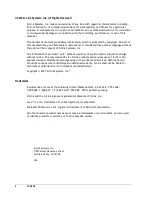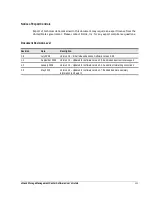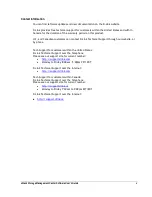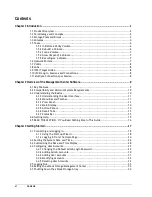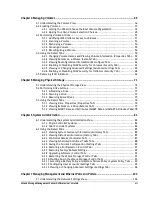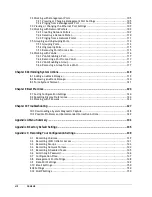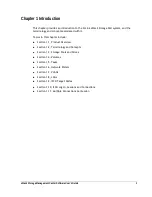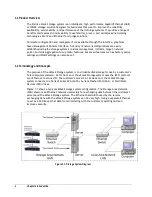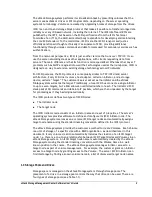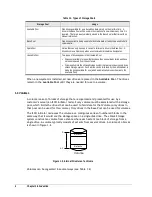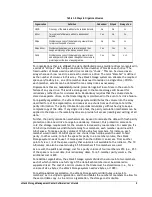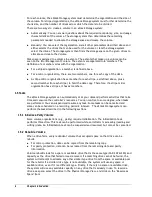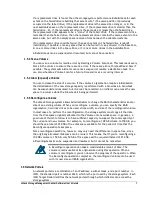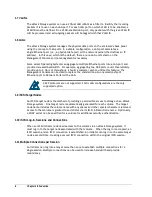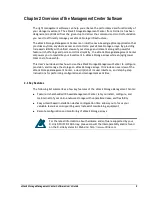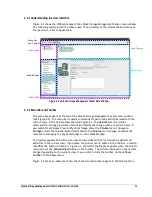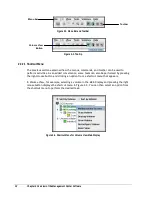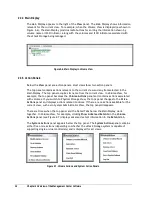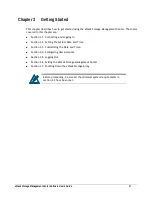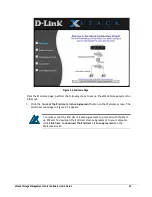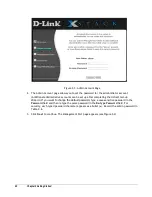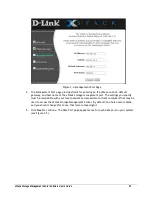
6
Chapter 1 Introduction
For each volume, the xStack Storage system must determine the organization and the size of
the volume. For striped organizations, the xStack Storage system must further determine the
chunk size, and the number of drives across which the data is to be divided.
There are two ways to create a volume in an xStack Storage system:
Automatically: You can answer questions about the required redundancy, size, and usage
characteristics of the volume. The storage system then determines the remaining
parameters needed to allocate the storage space and create the volume.
Manually: You can select the organization and all other parameters described above and
either selects the drives that can be used for the volume or lets the storage system
select the drives. The storage system then finds the storage space on the given drives to
allocate and create the Volume.
Disk space is assigned to a volume in extents. The extents that make up a volume can be
seen on the iStor Management Console. The extents are organized into members. The
definition of a member varies with the organization:
For a striped organization, a member is defined above.
For a mirror organization, there are two members, one for each copy of the data.
A stripe mirror organization has a member for each stripe, as defined above, plus a
second member (for each stripe) to hold the data copy. Therefore, if a stripe mirror
organization has x stripes, it has 2x members.
1.5 Tasks
The xStack Storage system can automatically or at your demand perform activities that take
time and consume the controller’s resources. You can control, to some degree, when tasks
are performed. You can suspend and resume any task. Some tasks can be cancelled and
some can be scheduled on a recurring, periodic interval. The xStack Storage system can
perform the tasks described in the following sections.
1.5.1 Initialize a Parity Volume
Some volume organizations (e.g., parity) require Initialization. The Initialization task
performs this action. This task can be performed while an initiator is accessing (reading and
writing) data. An Initialization task can be suspended and resumed, but cannot be cancelled.
1.5.2 Rebuild a Volume
When a drive fails, every redundant volume that occupied space on that drive can be
rebuilt.
For mirror protection, data can be copied from the remaining copy.
For parity protection, data can be recreated from the remaining data and parity
information.
Volume rebuilds look for a spare or available drive that is the same type (SAS/SATA/SSD) and
capacity as the drive that failed or was removed. If a matching drive cannot be found, the
system will attempt to allocate any other similar type drive from the spare or available pool
for the rebuild. If a similar drive type is not available, the system will use any spare or
available drive, even if it is a different type. Finally, if there is no spare or available drive,
the system will use any available capacity on any drive that is already in use. To reserve a
drive as a spare, select the drive in the Physical Storage View, and click on the "Reserve as
Spare" item.
Summary of Contents for DSN-5210-10 - xStack Storage Area Network Array Hard Drive
Page 9: ...xStack Storage Management Center Software User s Guide ix This Page Left Intentionally Blank ...
Page 10: ......
Page 90: ...80 Chapter 5 Managing Physical Storage This Page Left Intentionally Blank ...
Page 110: ...100 Chapter 6 System Administration Figure 6 18 Advanced Settings Tab ...
Page 132: ...122 Chapter 8 Performing System Actions THIS PAGE LEFT INTENTIONALLY BLANK ...
Page 136: ...126 Chapter 9 Best Practices This Page Left Intentionally Blank ...
Page 144: ...134 Appendix A Menu Summary THIS PAGE LEFT INTENTIONALLY BLANK ...
Page 148: ...138 Appendix B Factory Default Settings THIS PAGE LEFT INTENTIONALLY BLANK ...

